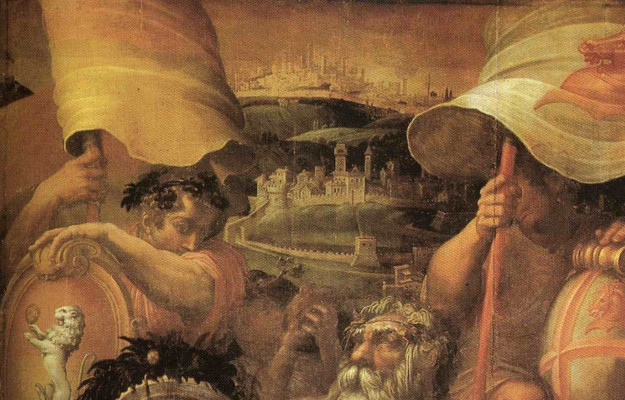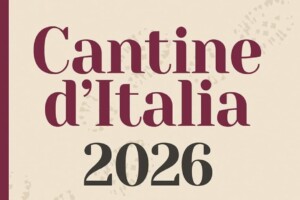Rarefied traces are present today of historical thirteenth century Tuscany, which have changed over time. The echo of the pre-Renaissance era from the landscape to historical and cultural heritage, has been lost and has become a tale, or a popular belief or the subject of minor studies. It was the era of the great battles and the endless wars between the Emperor of the Franks and the Papacy, between Florence, Pisa and Siena, of the Priors and of the “Government of the People”, of the towers and the restless young poets who wanted to revolutionize the world. Less is known about making poetry than is known about the splendor Cosimo the Elder initiated and then his descendants , the Medici in the Renaissance, perpetrated. In addition to a few fortifications spread throughout the territory, together with the frescoes and Parish churches, two elements from the Tuscan late medieval period still remain alive. These elements will always be the greatest inspiration and will be present in the life of anyone who knows how to grasp beauty and positivity in life. These “two” elements are Dante Alighieri and Vernaccia di San Gimignano (the city called the “Manhattan of the Middle Ages”, because of its iconic towers). Both have survived the test of time up to the present day, thanks to their ability, “mutatis mutandis”, to communicate directly with the human soul.
There is a third element in the artistic field, which this time comes from the sixteenth century, and sows the path of “seeds” on the anthropological and consumption notoriety of Vernaccia and San Gimignano: a painter named Giorgio Vasari. He painted the magnificent masterpieces on the panels that adorn the ceiling of the splendid Salone dei Cinquecento in Palazzo Vecchio, in the heart of Florence, depicting the hills of San Gimignano and a satyr intent on drinking that very wine. The Divine Comedy is still today a living instrument that arouses doubts and perceptions in the infinite number of enthusiasts who strive to penetrate the hidden meanings of Dante's masterpiece. It is a perfect rotating mechanism that sounds like a composition of harmonic musical scales and progressions in the musicality of its words and the beating of time, punctuated by the rhythm of literary talents and rhymes. The only white wine that has a Tuscan appellation is Vernaccia, which, as the Supreme Poet observed in Canto XXIV of Purgatory, was a widely known wine at the time, and still today represents one of the most famous "White" DOCs on the International scene.
Dante continually refers to his own sensations, emotions and physical reactions in his tercets, transmitting human feelings which will survive forever. Vernaccia is a white wine that has enjoyed much celebrity, due also to the touristic success of the city, San Gimignano, which (up until the Covid-19 onset) registered over 2 million tourists a year. The city aims to better itself and to be classified among the prestigious Italian whites, increasing its value and constantly pay greater attention to quality. Hence, it is raining fresh white grape must, the fruit of the golden Vernaccia grapes marked by tiny freckles, on San Gimignano and its production area of 700 hectares of vineyards, pampered by a perpetual circle of sunrises and sunsets. All in all, the appellation is closing 2021 on a positive note. There has been a +12% increase in market shares compared to 2019. Furthermore, in the first eleven months of 2021, 36.589 hectoliters of Vernaccia were bottled, while in 2020, the year of lockdowns, only 31.028 were bottled. However, the comparison to 2019 is substantial, because 32.497 hectoliters were bottled that year. Regarding the recent harvest that took place among disastrous phenomena for farmers - frosts to drought- the “White Queen” in the “Land of Red Kings” marked a positive trend, registering “only” a 10% drop in production. Now, at the end of the year, it is time to take stock and make resolutions. There are established appointments and objectives for the entire sector on the Vernaccia 2022 agenda, as Irina Strozzi Guicciardini, president of the Consortium of Vernaccia di San Gimignano explained to WineNews’ microphones: “we are waiting for the official appointments, starting from the Preview that we will organize using the “widespread” formula, at Vinitaly in Verona. We have collected positive data for 2021 and we expect to maintain this trend. The demand for Vernaccia is growing Internationally”.
To celebrate the seven hundred years since Dante's death, the Consortium invited two top experts of history and art to an informal meeting and greeting at Palazzo Vecchio in Florence, in the Salone dei Cinquecento, to talk about evident traces that link the literary beauties: Franco Cardini, Italian historian and essayist, specializing in the study of the Middle Ages, and Carlo Francini, head of the Unesco Relations Office of the Municipality of Florence. Historically, the Divine Comedy, and the poet who sang about Vernaccia, and continues to be talked about because of the canticles, the rhymes, the articulate and clear vision of the world’s schemes and the human soul, the continuous quotations and references to a vast and varied cultural panorama citing Arab mystics, oriental cults and magical formulas, laying the foundations of contemporary thought, and as a poetic demiurge, explaining the concept of “Beyond”, which still supports the collective imagination today. And artistically, the panel painted by Vasari on the ceiling of the Hall, and Vernaccia di San Gimignano. We asked Franco Cardini to explain who Dante Alighieri was when on May 7, 1300 he came to San Gimignano, a Florentine outpost in the land of Siena. “He was a fairly ambitious politician. He was a tycoon who belonged to the city aristocracy and therefore should have remained outside the city government, because at the time Florence was governed by a “People’s Government”, “people” meaning whoever joined a corporation. Dante joined the corporation of doctors and apothecaries and was thus admitted to the government, which is why he is depicted in the red robes, as they were the garments of doctors at that time. San Gimignano was a large city counting probably four or five thousand inhabitants. Taking into consideration that Florence had about one hundred and twenty thousand, it was a large city on good terms with Florence. The people of San Gimignano today are among the few Tuscans who like Florence, mainly because they do not like Siena. At that time, however, San Gimignano was a place of transit, a strategic area that was convenient for Florence and Siena. Dante, in a critical moment such as was the year 1300, went to San Gimignano with his Florentine colleagues, to make sure that the city remained faithful to Florence”.
The splendid vision of Vasari’s panel positioned opposite the stage in the Salone dei Cinquecento, in the center among the effigies that narrate the history of Florence, represents in the background, behind the three central figures, the portrait of San Gimignano. It is “an allegory”, explained Carlo Francini, head of the Unesco Relations Office of the Municipality of Florence, to WineNews, “that represents the Elsa river in which a satyr is drinking. It is not easy to guess what he is drinking, but Vasari himself explained the scene. When he described the painting to Prince Francis, he made an explicit reference to the panel in question, claiming to have painted the Elsa with a satyr drinking Vernaccia behind it, thus establishing an explicit reference to white wine”.
Dante, Vasari and Vernaccia, therefore, are topics that belong to history, but which cut through the grooves of the past remaining attached to the present, thereby creating a universal beacon for values at the center of humanism. Hence, as in the past, they will also be, in the near future, a key and a mental habitus to be expanded so that human progress can continue, especially in relation to the damage that climate change will produce on the environment. The insight of the Supreme Poet, the majestic masterpieces of Giorgio Vasari and the pleasure of a white wine to be consumed in social contexts, are, as in the thirteenth century, still today the glue of each and every evolved era.
Copyright © 2000/2025
Contatti: info@winenews.it
Seguici anche su Twitter: @WineNewsIt
Seguici anche su Facebook: @winenewsit
Questo articolo è tratto dall'archivio di WineNews - Tutti i diritti riservati - Copyright © 2000/2025









































































































































































































